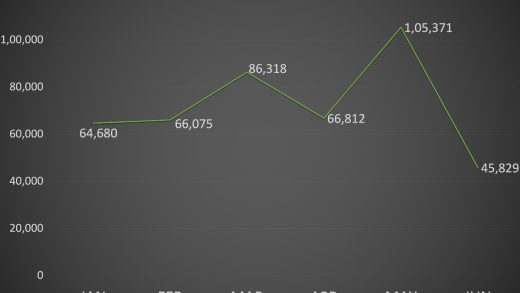Showing Up, the intricate, quietly devastating character study from director Kelly Reichardt, is a portrait of an artist on fire. It’s an elegant tale, concerned with the protection of a personal ethos, that also takes heed of the crushing realities of living for your art amid capitalistic requirements and the harm caused by the stereotyped romanticization of the lonely, eccentric artist. Brusque without being flippant, tender without syrupy tones, the director’s latest film could easily be mistaken as a minor work in an already distinguished career if the intentional care weren’t so apparent.
Reichardt’s films (Wendy and Lucy, Certain Women, and First Cow) have often centered on strivers working on the margins of the margins simply to survive. On its face, a visual artist like Lizzy (Michelle Williams) breaks that trend. As the daughter of creatives — her sculptor father and her mother, the head of the art foundation where she works — Lizzy seemingly occupies a privileged place. But in Lizzy’s story, Reichardt and her longtime screenwriting collaborator, Jon Raymond, find new narrative routes around their established patterns.
Showing Up winkingly begins when a pigeon appears in Lizzy’s bathroom. She isn’t the first one to find the bird, however; her cat injures the fowl to the point of it needing bandages. That medical attention arises from Lizzy’s next-door neighbor, landlord, and fellow artist Jo (Hong Chau), who at first seems intent on nursing the bird only to slowly leave the animal in Lizzy’s care.
It’s a hard role for the quiet, wry Lizzy to fill. She doesn’t really tolerate humans, much less birds. But it’s telling that, like Lizzy, pigeons are othered animals, suggestive of unkemptness and squalor. They are often kicked, targeted by urban architecture by way of plastic spikes impeding the places where they perch, and they’re rarely granted even a modicum of empathy. Through the bird, Lizzy finds solace in a living thing, a careful care not unlike the light touch she grants her sculptures of dancing humans.
Showing Up explores an artist’s life for better and worse.

Credit: A24
Similar mindfulness trickles down to the unhurried pacing: Reichardt’s editing studiously observes the strange milieu of the Portland art scene. Much of that filming takes place at the Oregon College of Art and Craft. There, on the grounds, we witness young minds dedicated to creative freedom. They use the kiln to see their imaginations shocked into hardened form. They dance therapeutically on the lawn; they take up classrooms to paint still lifes and hallways to work on larger canvases. Recently, The New Yorker published a story on the declining attendance in liberal arts programs, the ramifications of denigrating art and literature as purely the frivolous pastime of unmotivated dreamers. Through this film, Reichardt captures the ways these studies can expand and nurture the mind, alter and challenge the status quo, and open new lenses to see the world.
That isn’t to say Reichardt and her longtime cinematographer, Christopher Blauvelt, skirt past life’s realities. Because if these students encapsulate the possibilities and potentialities of youth matched with the privilege to pursue their passions unencumbered by materiality or livable necessities, then Lizzy is the blueprint for the mundane work required to support such a life. She is often relegated to being a facilitator. She is an administrative assistant working at the art school to fulfill the vision of her mother, the school’s artistic director, to promote the arrival of a guest lecturer, to promote the flighty Jo’s student show. She must toil throughout the day at this job before she can dedicate her time to her real love, her art.
Jo, on the other hand, is a fast-rising visual artist, but more importantly, Lizzy’s ne’er-do-well landlord who refuses to carve out time to fix Lizzy’s hot water. The situation leaves Lizzy looking for unlikely places to take showers at a moment when she must work around the clock to finish her pieces for her own show. Her problem, of course, pales in comparison to those of less-advantaged tenants and people of color who must deal with nefarious landlords on a daily basis. Seen through the lens of a white woman, Riechardt, about a privileged white woman, Lizzy, the tension can feel unearned. And yet, the arc’s nod isn’t without merit, primarily because it’s set among people whose politics would lead you to believe they wouldn’t succumb to miserly behavior. This says there’s almost no such thing as a good landlord, even if it is a liberal woman of color.
Showing Up practices radical empathy.

Credit: A24
And yet, what is most thrilling — for lack of a better word — in Showing Up is how Reichardt and Raymond gently traverse Lizzy’s family life. There is her retired artist father (Judd Hirsh), presently hosting two loafing travelers at his home, and her aforementioned mother. Both are far more concerned with the safety of others than they are with her career and the state of her brother Sean (John Magaro). When she separately asks the pair if they’ve heard from him, they can scarcely acknowledge his absence. It takes Lizzy personally visiting Sean to discover the length of his mental decline: He is despondent and driven by compulsion; he thinks the neighbors have blocked his satellite signal; he begins digging holes in his backyard. Lizzy tries to raise the alarm to her parents to almost no avail.
The state of her brother, played by Magaro with the soft, fragile frozenness of the figurines Lizzy prepares for her show, and with the brokenness of the pigeon she cares for, gives the final third of the film a surprising tension. Will Sean appear at her exhibition, or will he spiral away? The key to such an aching question not devolving into emotionally manipulative trenches partly arises from Reichardt’s deft, intimate eye, which draws us into the orbit of the distant moon that is Lizzy, and can also be credited to the immaculate work by Williams.
As Lizzy, Williams projects a wide stance. Her shoulders are hunched. She’s downcast, her vision pulled to the ground by the weight of her responsibilities. Her terse speech and frigid physicality magically interplay with the free-floating flute score, played by André Benjamin, who also portrays the art school’s laidback kiln operator. She is the opposite of the cavalier stereotype of the inspired artist; instead symbolizing the search for creative sustenance in a broken culture. More than any of their previous three films together, with Showing Up, Reichardt and Williams suggest a collaborative auteurism. They take what should be an unapproachable, myopic subject (the privileged position of dogged creatives) and imbue it with conversations about leasing, mental health, and the importance of the arts, which graduates from a purely intellectual exercise to a story that’s deeply felt in its thought-provoking curiosity.
By the generous conclusion, when the pressures witnessed in this taut slice of life evaporate, we wonder how Reichardt pulled off such a subtle magic trick. She has crafted a film that speaks to the country’s economic stagnation, the sinking valuation of aesthetic beauty, the sacrifices required to live a worthwhile, self-examined life. It’s why Showing Up is another fully realized song from Reichardt, a director who has at once filled the dual role of American indie film’s national bard and its canary in the cultural coal mine.
Showing Up opens in theaters April 7.









